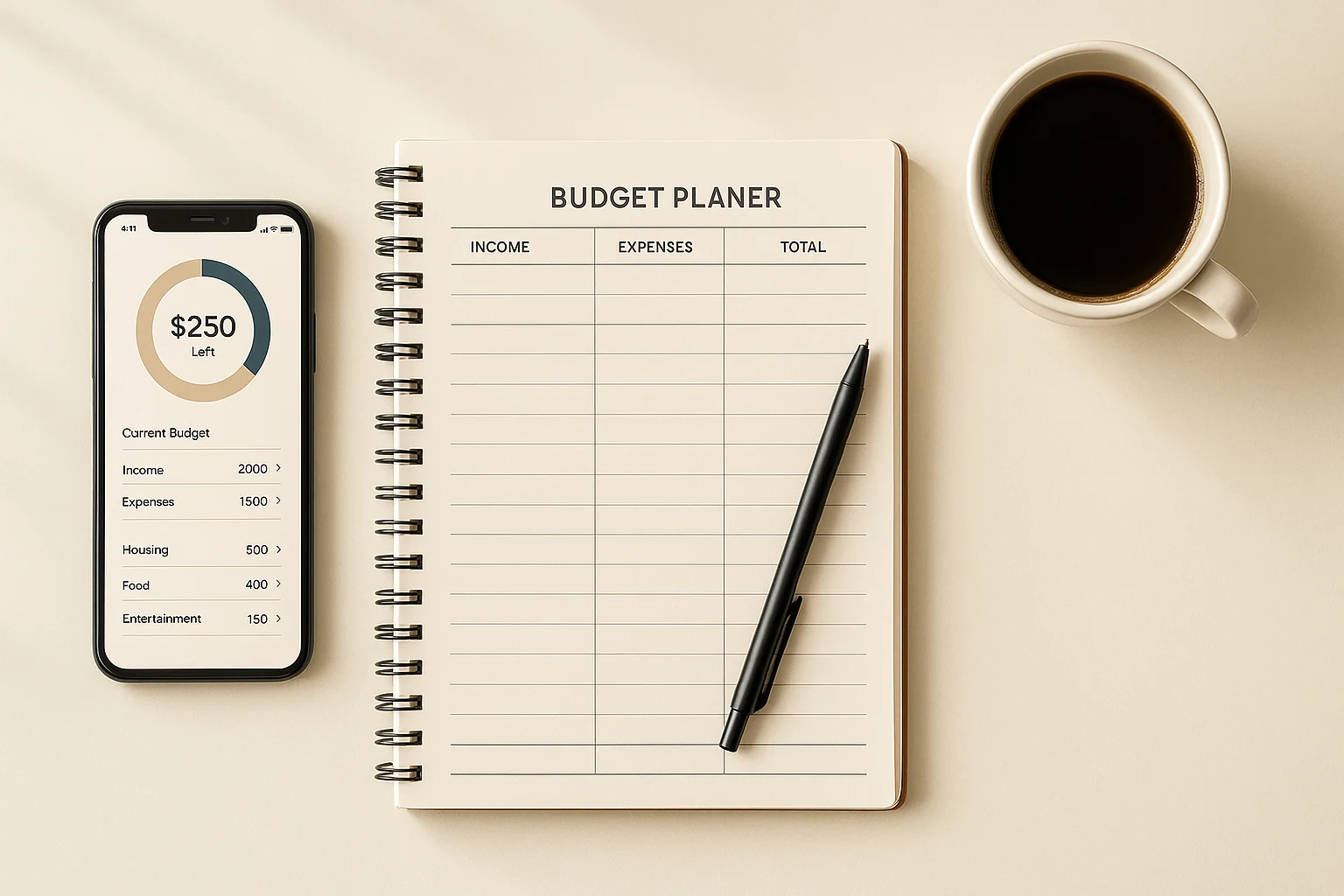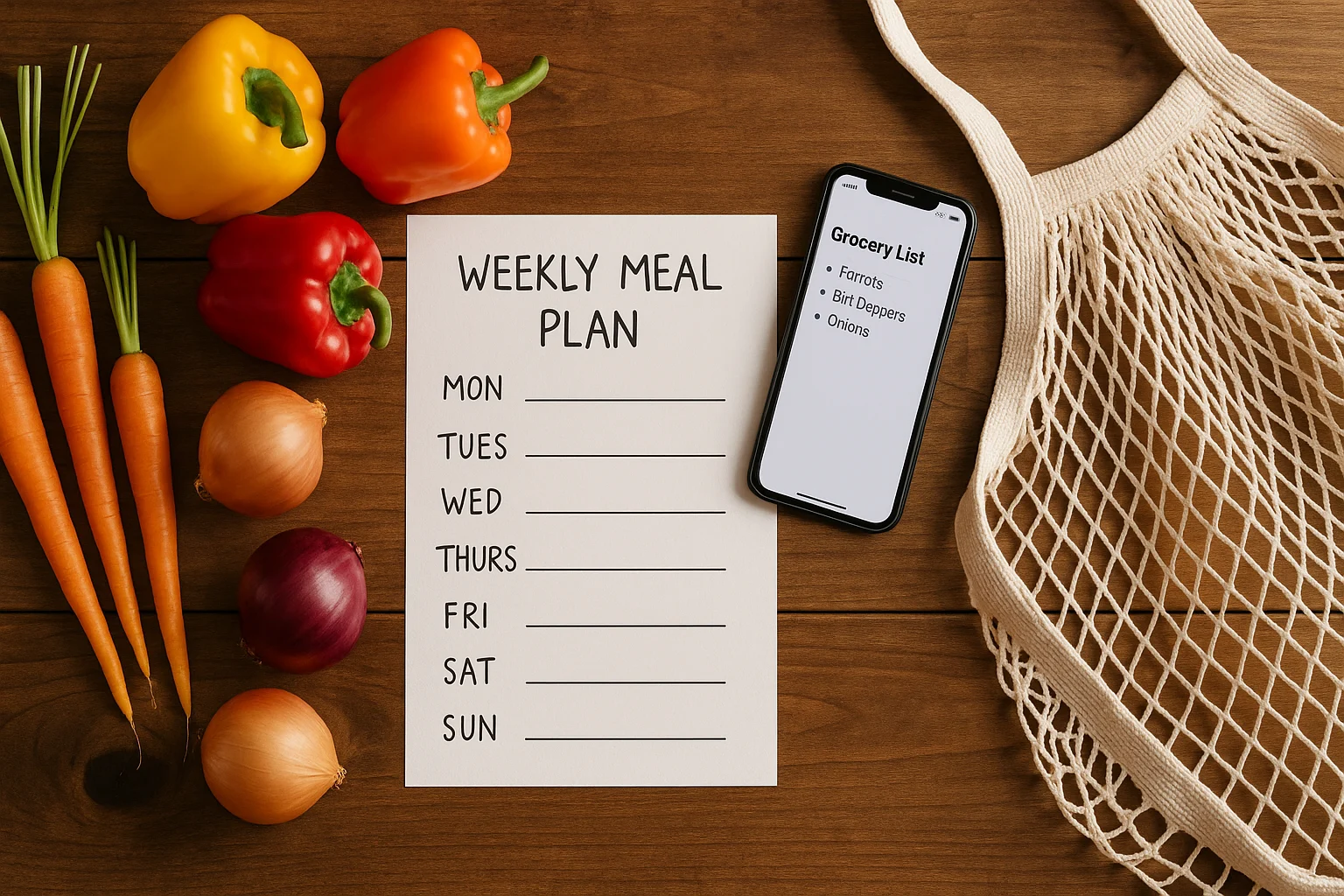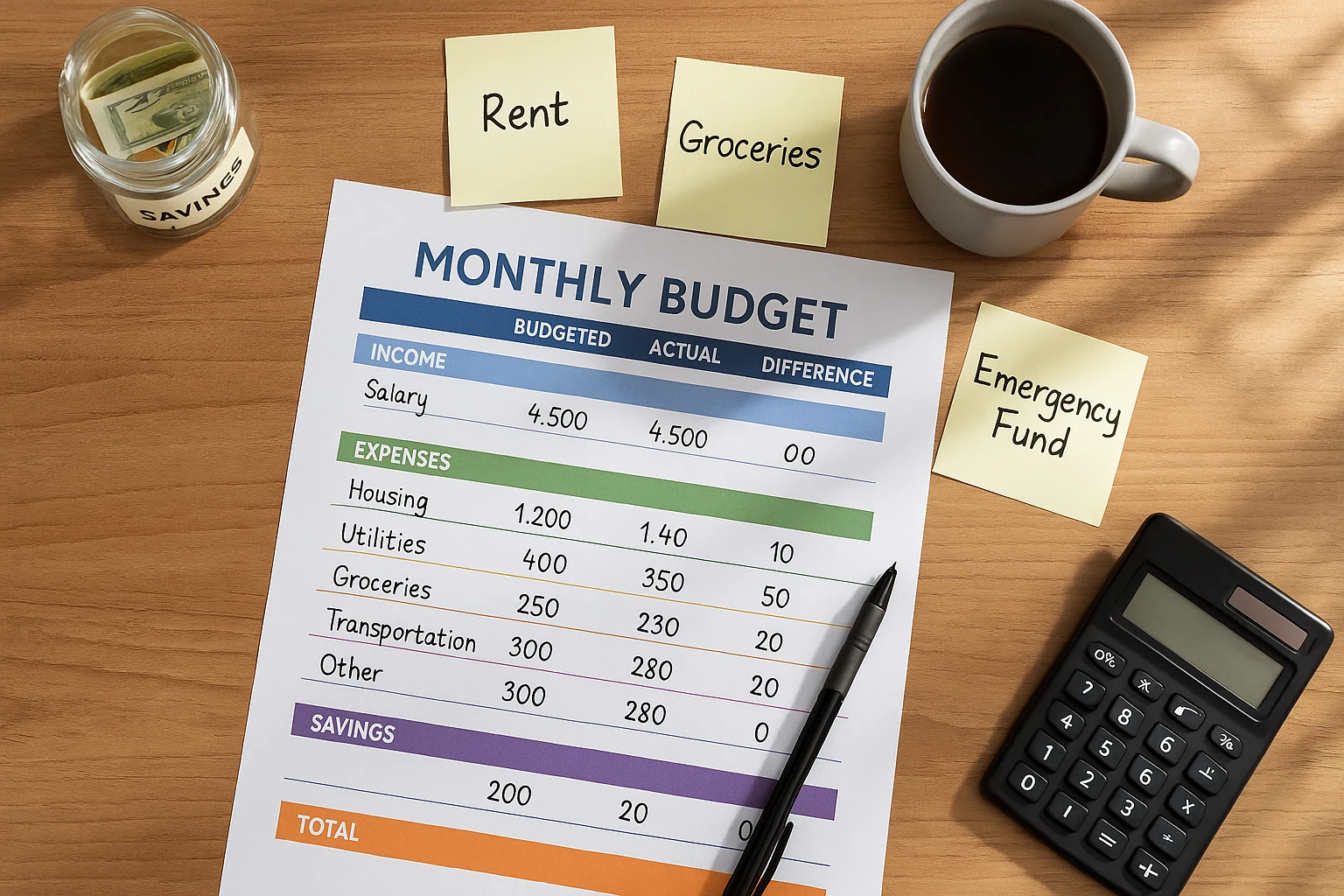
Struggling to save money while craving financial freedom? You’re not alone—68% of Americans have less than $1,000 in savings, per a 2023 survey. New to frugality, Sarah, a 28-year-old teacher, slashed $1,200 in expenses last year with simple frugal lifestyle tips beginners can follow. This guide delivers actionable, beginner-friendly steps to save money, reduce waste, and build a secure future without giving up what you love.
Crush Your Spending Now! 🚀Table of Contents
- Key Takeaways for Frugal Lifestyle Tips Beginners
- What is a Frugal Lifestyle?
- Mindset Shifts for Frugal Lifestyle Tips Beginners
- Easy Frugal Lifestyle Tips for Beginners
- Overcoming Common Frugality Challenges
- Interactive Frugality Check-Up for Beginners
- Long-Term Benefits of a Frugal Lifestyle
- Common Mistakes to Avoid When You’re Starting Out
- Frequently Asked Questions
Key Takeaways for Frugal Lifestyle Tips Beginners
- Small Changes, Big Wins: You don’t need to overhaul your life. Little tweaks, like skipping takeout, can save you hundreds with a few beginner-friendly frugal habits.
- Mindset Matters: I started questioning every purchase—do I need this or just want it? Focusing on needs over wants keeps my budget in check.
- Plan Like a Pro: Meal planning and budgeting have been game-changers for me. Knowing my expenses ahead of time keeps me on track without stress.
- Thrift and DIY Vibes: I love hunting for secondhand treasures and tackling small DIY projects. It’s fun, saves cash, and cuts waste—perfect for beginners.
- Ditch the Extra Stuff: I canceled subscriptions I barely used, like that random streaming service. It’s amazing how much you save by cutting the fluff!
What is a Frugal Lifestyle, Really? 🤔
Frugality often gets a bad rap, mistaken for being cheap. However, it’s about being intentional with your spending. For instance, a frugal person might invest in a durable $50 pair of shoes that lasts years rather than buying $20 pairs that wear out quickly. Consequently, starter tips focus on value, not just price, aligning spending with what truly matters to you.
“Frugality is not about depriving yourself. It’s about prioritizing what’s important and eliminating what’s not.”
Ready to rethink your spending? Let’s explore beginner-friendly frugal tips you can start today.
Mindset Shifts for Frugal Lifestyle Tips Beginners
Before jumping into the practical stuff, I had to rethink how I approach money. Frugality isn’t about being stingy—it’s about building habits that match your big dreams. For me, picturing a debt-free life or a dream trip keeps me motivated. I also started jotting down what triggers my impulse buys, which helped me cut them out. Here’s how I got into the frugal mindset:
- Find Your “Why”: What’s your goal—maybe a vacation or early retirement? I wrote mine down and stuck it on my fridge to stay focused every day.
- Track Every Penny: I used to spend blindly, but tracking every dollar with a simple app showed me where I was wasting money. You can’t fix what you don’t see!
- Needs vs. Wants: I learned food and rent are needs; daily lattes are wants. Prioritizing essentials is a core beginner step.
- Wait It Out: I give myself 24 hours before buying something impulsive. Most times, I realize I don’t even want it anymore—saves so much!
- Ignore the Ads: Marketing tricks used to get me, but now I question if I really need that shiny gadget. It’s freed me from overspending.
- Celebrate the Wins: Saving $5 by cooking at home feels awesome! I track these small victories in a notebook, and it keeps me pumped.
Pro Tip: Try the “30-day rule” for big purchases—wait a month before buying to ensure it’s worth it. This simple rule saved Sarah $300 on a gadget she realized she didn’t need!

Easy Frugal Lifestyle Tips for Beginners
Now, let’s dive into practical frugal lifestyle tips beginners can use to save money fast. According to NerdWallet, Americans can save thousands annually by cutting dining-out costs alone. Here’s how to start:
Meal Planning for Frugal Lifestyle Tips Beginners 🍽️
Meal planning totally changed how I spend on food—it’s one of the best places for beginners to start! I use apps like Mealime to find cheap, tasty recipes that don’t stress me out. Buying seasonal veggies saves me a ton since they’re fresher and cheaper. Start small, and you’ll see your grocery bill drop fast.
- Plan Weekly Meals: I sketch out my week’s meals before shopping, so I don’t grab random snacks.
- Stick to a Grocery List: I only buy what’s on my list—saves me from those tempting aisle-end treats.
- Cook at Home: Homemade dinners are way cheaper and honestly taste better than takeout.
- Pack Lunches: Bringing lunch to work saves me $10-15 a week, which adds up fast.
- Use Leftovers: I turn last night’s chicken into a salad or soup—zero waste, all flavor.
- Batch Cook: I cook big batches on Sundays and freeze portions for quick meals.
- Check Inventory: I use up pantry stuff first to avoid buying duplicates.
- Go Meatless: Veggie meals are so affordable since meat’s pricey.
- Grow Herbs: I started a tiny herb garden on my windowsill—saves cash and adds flavor.
Secondhand Shopping Strategies
Shopping secondhand is a top beginner strategy to save money and reduce waste. Negotiating prices at thrift stores or online marketplaces can yield even better deals. Plus, supporting secondhand markets strengthens local communities by keeping goods in circulation.
- Thrift Stores: Find clothing, furniture, and more at a fraction of retail.
- Consignment Shops: Score high-quality secondhand items.
- Online Marketplaces: Check Facebook Marketplace or eBay for deals.
- Garage Sales: Hunt for low-priced treasures locally.
- Clothing Swaps: Trade clothes with friends for free.
- Libraries: Borrow books and movies instead of buying.

DIY Home Fixes 🛠️
Basic DIY skills save on repair costs.
- Learn Plumbing: Fix leaky faucets with online tutorials.
- Simple Electrical: Replace switches safely to avoid electrician fees.
- Landscaping: Mow your lawn or plant flowers yourself.
- Seal Windows: Prevent drafts to cut energy bills.
- Paint Walls: Refresh rooms affordably with DIY painting.
- Clean Yourself: Skip professional cleaning services.
Cutting Subscriptions
Subscriptions drain budgets. Review and cut what you don’t need.
- Streaming Services: Keep only one or share accounts.
- Gym Memberships: Cancel unused memberships; try free workouts.
- Magazines: Read online or borrow from libraries.
- Software: Explore free alternatives to premium tools.
- Cable TV: Switch to streaming or an antenna.
- Unused Apps: Cancel apps with monthly fees.
Low-Cost Daily Routines for Frugal Lifestyle Tips Beginners
Small daily changes add up.
- Free Entertainment: Enjoy parks or community events.
- Walk or Bike: Save gas and stay active.
- Use Free Resources: Libraries offer books and more.
- Brew Coffee: Skip the $5 latte habit.
- Happy Hour: Catch drink deals if socializing.
- Free Exercise: Use online workout videos.
- Reusable Bottle: Avoid bottled water costs.
Optimize Transportation Costs 🚗
I used to spend way too much on gas and car stuff, but the changes below helped without much hassle. These little tweaks keep more money in my wallet while I still get around easily.
- Carpool: I buddy up with friends or coworkers to split gas costs—an easy way to save.
- Public Transit: I take buses or trains when I can, which cuts costs and stress. It pairs well with smart budgeting habits.
- Bike or Walk: For quick trips, I bike or walk to save gas and feel great.
- Maintain Your Car: I keep my car tuned up to dodge expensive repairs.
- Shop Insurance: I compare car insurance deals yearly to save hundreds.
- Drive Efficiently: I go easy on the gas pedal to stretch my fuel further.
Save on Energy Costs 💡
Lowering my utility bills felt like a big win, and these ideas made it simple. Small tweaks, like unplugging devices, cut costs without much effort. It’s amazing how small changes can shrink your energy bill and help the planet.
- Turn Off Lights: I flip off lights when I leave a room—one of the easiest ways to cut electricity use.
- Unplug Electronics: I unplug chargers and gadgets to stop sneaky power drain.
- Use LEDs: Switching to LED bulbs was a game-changer—they last and save energy.
- Adjust Thermostat: I nudge it down in winter and up in summer to keep bills low.
- Cold Wash: Washing clothes in cold water saves energy and preserves fabric.
- Short Showers: I cut shower time to save water and energy.
- Air Dry Clothes: I hang clothes to dry—free and eco-friendly.
- Seal Drafts: I sealed windows to keep my home cozy and efficient.
Low-Cost Entertainment 🎉
I’ve found tons of ways to have fun without spending much—think parks, free events, and game nights. It’s all about enjoying life on a budget.
- Local Parks: I love exploring local trails and parks—free, easy fun.
- Community Events: Free concerts and festivals are my go-to for a good time.
- Game Nights: Hosting friends for game nights is cheap and a blast.
- Library Books: I borrow books and movies instead of buying.
- Volunteer: Giving back feels amazing and costs nothing.
- Learn Skills: I take free online courses to learn new skills.
Plan Future Expenses 🗓️
Planning ahead has saved me from so many money surprises. It’s a key step to stay in control. Saving for big purchases also helps me avoid debt, especially when paired with strategies like the debt snowball or avalanche method.
- Create a Budget: I map out my monthly spending—it’s like a roadmap for my money.
- Set Goals: I use SMART goals to keep my savings focused and achievable.
- Emergency Fund: I stash a little cash for unexpected costs, like car repairs.
- Big Purchases: I save up for big items instead of swiping my credit card.
- Review Budget: I tweak my budget monthly to make sure it’s working for me.
Overcoming Common Frugality Challenges
Starting a frugal lifestyle felt overwhelming at first, especially with my packed schedule and friends who love splurging. Meal planning seemed impossible with no time, but I found ways to make it work. Here’s how I tackled the hurdles:
- Lack of Time: I carve out 30 minutes on Sundays to plan meals or use apps like Mealime to make it quick and easy.
- Social Pressure: When friends push me to spend, I suggest free hangouts like park picnics or game nights—still fun, way cheaper.
- Feeling Deprived: I budget a little “fun money” for treats, so I don’t feel like I’m missing out.
- Family Expectations: I explained my savings goals to my family, and now they support my thrifty choices instead of questioning them.
Interactive Frugality Check-Up for Beginners
Curious how frugal you are? Answer these quick questions to see where you stand and get personalized ideas to boost your savings!
Long-Term Benefits of a Frugal Lifestyle
Living frugally isn’t just about saving a few bucks—it’s life-changing! I’ve cut out random expenses and saved $500 a month, which adds up fast. Plus, choosing secondhand stuff shrinks my environmental footprint, which feels great. These beginner-friendly habits, paired with a solid frugal living guide, taught me discipline and intentionality, making me feel more in control of my life, not just my wallet.
- Financial Freedom: I’m saving for a big trip, and it feels so good to chase my passions.
- Reduced Stress: Less money worry means I sleep better at night.
- Greater Security: My emergency fund gives me peace of mind for unexpected bills.
- Early Retirement: I’m stashing away cash now to retire early and live my best life.
- Improved Relationships: Less financial stress means I’m happier with my family and friends.

Common Mistakes to Avoid When You’re Starting Out
Frugality has pitfalls, especially for beginners. Setting unrealistic goals, like cutting all fun spending, can lead to burnout. Instead, aim for balance to sustain your efforts. Moreover, neglecting to track progress can derail your journey, as you won’t see where savings are possible. Avoid these to make the ideas work for you:
- Too Restrictive: Balance saving with small joys to avoid feeling deprived.
- Ignoring Quality: Invest in durable items to save long-term, like quality shoes.
- Not Tracking: Monitor spending to find savings and stay motivated.
- Neglecting Mental Health: Prioritize self-care while saving to maintain well-being.
- Comparing to Others: Focus on your unique goals, not others’ lifestyles.
Frequently Asked Questions
Final Thoughts
Start with one or two easy wins—like weekly meal planning and a quick subscription audit—then build momentum. Small, consistent moves stack into real savings, less stress, and more freedom to fund what matters.
This content is for informational purposes only and not financial advice. Consult a professional before making financial decisions.

